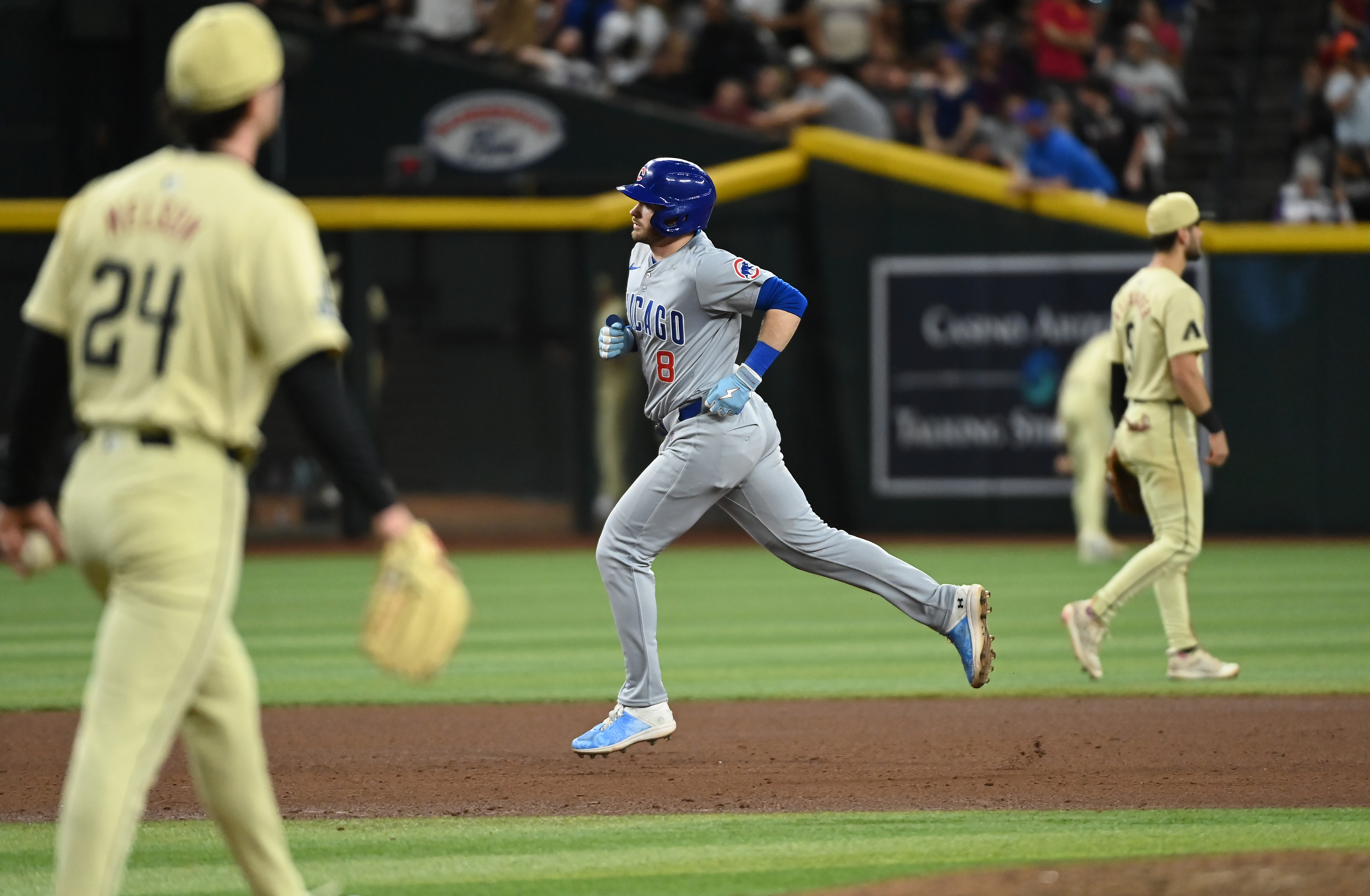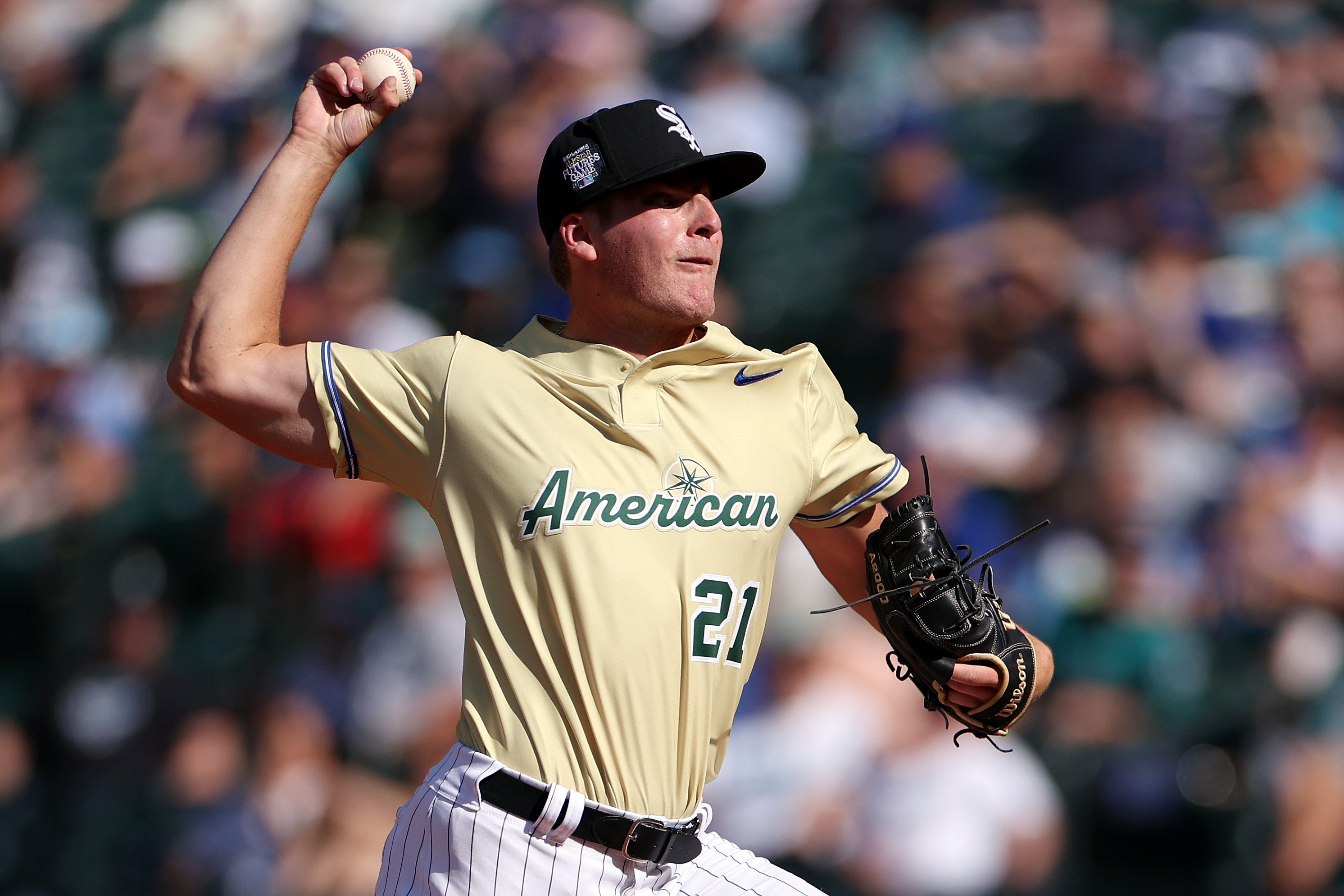
Everybody has a plan, Mike Tyson once said, until they get punched in the mouth.
To become a heavyweight contender, the Cubs had to constantly bob and weave, hit below the belt a few times and get up off the mat over and over again.
So don’t pretend the Cubs knew it would happen like this or try to airbrush history and push the year-ahead-of-schedule narrative. The Plan wasn’t even necessarily supposed to be The Plan.
When Theo Epstein left the Boston Red Sox and took over as president of baseball operations, the idea of the Cubs fighting for the second wild card and finishing in third place in the National League Central by Year 4 would have sounded completely reasonable, maybe even a little disappointing.
That’s it? Then again, raise your hand if you saw this lightning-bolt season coming in 2015, the Cubs waking up on Sept. 24 with the third-best record in the majors and on pace for 95 wins heading into this weekend’s showdown against the Pittsburgh Pirates at Wrigley Field.
The Cubs needed guts to take a stocky catcher/outfielder from Indiana University, make a below-slot deal with last year’s No. 4 overall pick and fast-track Kyle Schwarber into the middle of their lineup.
The Cubs needed patience to grab a Tommy John case from the Cleveland Indians in the Rule 5 draft, carry Hector Rondon on the 2013 roster and allow him to develop into a 100-mph closer.
MLB
The Cubs also had to get lucky, be aggressive and learn how to counterpunch in baseball’s toughest division. With the magic number down to two, a look back at the chain reactions that might have created a playoff monster.
[MORE CUBS: Kyle Hendricks makes pitch for playoff rotation]
“Those twits never lie”
Dale Sveum didn’t have any use for social media, and he will never be known as the most elegant public speaker. But the baseball lifer has so many contacts throughout the industry and a gym-rat mentality that still influences this team.
After 197 losses in two seasons, Epstein fired the manager over beers inside a neighborhood bar along the Southport Corridor. But two of Sveum’s closest allies — Chris Bosio and Mike Borzello — stayed on the coaching staff after the 2013 season and then survived Rick Renteria’s one-and-done year.
Bosio and Borzello work closely with the pitching staff and catchers, breaking down video, interpreting the data and developing a strong game-planning system that tries to maximize individual strengths and minimize damage.
Together, they helped coach up and market pitchers like Ryan Dempster, Matt Garza, Scott Feldman, Jeff Samardzija and Jason Hammel for the midseason trades that infused the organization with so much young talent.
The Cousin Eddie
Since the Tampa Bay Rays would never set the market and pay top dollar, Alan Nero tried to get a little something extra for his client, negotiating an opt-out clause into Joe Maddon’s contract if general manager Andrew Friedman left the organization.
That triggered once Friedman left to run baseball operations for the Los Angeles Dodgers last October. If the St. Louis Cardinals hadn’t just beaten Cy Young/MVP winner Clayton Kershaw twice in a best-of-five series, would the Dodgers have demoted Ned Colletti?
Epstein and general manager Jed Hoyer quickly met Maddon at an RV park on Florida’s Gulf Coast and ultimately fired Renteria, a good guy who had already been told he would be coming back in 2015 (despite looking overmatched).
Nero, the managing director of Octagon Baseball, has an office on Michigan Avenue, fueling the suspicions in Tampa that this had been another insider deal in Chicago. The Cubs felt the Rays reacted like spoiled brats, pushing Major League Baseball to launch a tampering investigation.
Maddon has the perfect personality to lead this team, hip enough to connect with rookies, the big name that commands respect from veterans, a curiosity level that works well with The Geek Department and the right amount of weird to keep the Chicago media distracted.
All that makes Maddon’s five-year, $25 million contract (plus playoff incentives) look like a bargain.
[MORE CUBS: Joe Maddon promises Cubs will party hard once playoff spot is clinched]
“Quarterback controversy”
In explaining why he sold low on Anthony Rizzo, Josh Byrnes told reporters he didn’t want a “quarterback controversy.” Byrnes — the San Diego Padres general manager at the time — had acquired first baseman Yonder Alonso in the Mat Latos deal with the Cincinnati Reds just before Christmas 2011.
The Cubs got their franchise first baseman three weeks later, giving up Andrew Cashner, a talented pitcher they believed would struggle to stay healthy and max out as a reliever.
Cashner has made 80 starts for the Padres, accounting for 520-plus innings. Byrnes — another one of Epstein and Hoyer’s buddies from Boston — now works in Friedman’s front office. Alonso has 32 career home runs in the big leagues.
Rizzo is a two-time All-Star who should show up again in the MVP voting this year (30 homers, 95 RBIs). He turned 26 last month and could remain under club control through the 2021 season.
The Oriole Way
The Baltimore Orioles pushed a cookie-cutter philosophy onto their pitchers and felt the tension between Dan Duquette’s front office and Buck Showalter’s dugout.
It didn’t stop the Orioles from winning 93 games in 2012 and the American League East last season. Maybe it never would have happened for Jake Arrieta in Baltimore (20-25, 5.46 ERA).
But that change-of-scenery trade in the middle of the 2013 season gave the Cubs a legitimate ace, a 20-game winner, someone with the potential to collect Cy Young hardware.
It only cost Feldman’s final 15 starts before free agency and reserve catcher Steve Clevenger to get Arrieta plus hard-throwing reliever Pedro Strop and two international signing bonus slots.
[MORE CUBS: Kris Bryant proves he's even better than the hype]
Ground Control
Another what-if scenario comes from perhaps the most polarizing organization in the game. Imagine how far the Houston Astros would be puffing their chests out now if they had taken Kris Bryant with the No. 1 overall pick in the 2013 draft and dropped another Rookie of the Year frontrunner into their powerful lineup.
The Cubs weren’t sold on Mark Appel, concerned he had been sheltered too much at Stanford University and left wondering just how high his ceiling would be. Plus, the Epstein administration doesn’t like the risk involved with pitchers near the top of the draft, believing position players are a much safer bet.
Bryant — a 6-foot-5 slugger out of the University of San Diego with superstar potential — looked almost like a sure thing to the Cubs. The Astros passed on Bryant (26 homers, 98 RBIs in The Show) and took Appel (5.12 ERA through 253 career minor-league innings).
The Tanaka sweepstakes
The Cubs also lucked out when the New York Yankees blew them away in the Masahiro Tanaka sweepstakes, committing $175 million to the Japanese pitcher, who has pitched at an All-Star level but hasn’t answered all the questions about his durability.
Epstein didn’t spend all of his department’s 2014 dollars, working with chairman Tom Ricketts to essentially create a savings account for the baseball side, a marked change from how it had been set up during the Jim Hendry administration.
This unconventional move was supposed to sync up the timeline with Crane Kenney’s business-operations department, working around the franchise’s financial restrictions until the Cubs had big-market spending power again.
The Cubs rolled the Tanaka money into this year’s budget, artificially inflating the payroll and helping finance Jon Lester’s six-year, $155 million megadeal.
[MORE CUBS: Joe Maddon brings zoo animals to Wrigleyville circus]
The gorilla suit
The Cubs have a Boston complex, trying to use Fenway Park as a blueprint for the Wrigley Field renovations, and they probably wouldn’t be here without outgoing Red Sox CEO Larry Lucchino.
Lucchino helped drive Epstein out of Fenway Park, first in a gorilla suit on Halloween 2005, and for good after the epic collapse at the end of the 2011 season.
Lucchino — who first helped Epstein break into the business and finally lost the power struggle in Boston this year — also tried to play hardball with Lester, making a below-market offer to a two-time World Series champion.
Lester ultimately felt disrespected and that standoff led the Red Sox down the path of dealing a homegrown player to the Oakland A’s at last year’s trade deadline.
During his recruiting trip to Chicago last November, Lester kept telling Epstein: “They’re going to burn this city down again when we win the World Series.”


